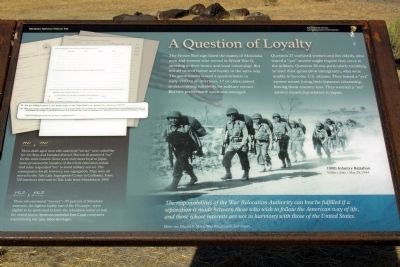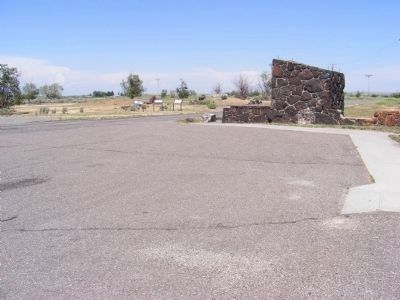Hunt in Jerome County, Idaho — The American West (Mountains)
A Question of Loyalty
Question 27 confused women and the elderly, who feared a "yes" answer might require they serve in the military. Question 28 was particularly troubling to Issei (first-generation immigrants), who were unable to become U.S. citizens. They feared a "yes" answer meant losing their Japanese citizenship, leaving them country-less. They worried a "no" answer meant deportation to Japan.
27. Are you willing to serve in the armed forces of the United States on combat duty, wherever ordered?
28. Will you swear unqualified allegiance to the United States of America and faithfully defend the United States from any or all attack by foreign or domestic forces, and forswear any form of allegiance or obedience to the Japanese emperor, or any other foreign government, power, or organization?
no, no
Those draft-aged men who answered "no-no" were called the No-No Boys and branded disloyal. But not all answered "no" for the same reasons. Some were truly more loyal to Japan. Some protested the injustice of the whole relocation ordeal. And some responded "no" to avoid military service. The consequence for all, however, was segregation. They were all moved to the Tule Lake Segregation Center in California. Some 328 internees were sent to Tule Lake from Minidoka in 1943.
yes, yes
Those who answered "yes-yes"—97 percent of Minidoka internees, the highest loyalty rate of the 10 camps—were eligible to be sponsored to leave the relocation center or join the armed forces. Sponsors included East Coast companies experiencing war time labor shortages.
The responsibilities of the War Relocation Authority can be best fulfilled if a separation is made between those who wish to follow the American way of life, and those whose interests are not in harmony with those of the United States.
Director Dillon S. Myer, War Relocation Authority
Erected by National Park Service.
Topics. This historical marker is listed in these topic lists: Asian Americans • Civil Rights • War, World II. A significant historical year for this entry is 1943.
Location. 42° 40.688′ N, 114° 15.056′ W. Marker is in Hunt, Idaho, in Jerome County. Marker is on
Hunt Road west of County Road S1400E, on the right when traveling west. Marker is located in the Minidoka National Historic Site. Touch for map. Marker is in this post office area: Jerome ID 83338, United States of America. Touch for directions.
Other nearby markers. At least 8 other markers are within walking distance of this marker. Honor Roll (here, next to this marker); Minidoka National Historic Site (here, next to this marker); On Guard (a few steps from this marker); Soothing Waters (within shouting distance of this marker); Minidoka Relocation Center (within shouting distance of this marker); Symbols of Imprisonment (within shouting distance of this marker); Running a Camp (about 300 feet away, measured in a direct line); Censored Mail (about 500 feet away). Touch for a list and map of all markers in Hunt.
Also see . . . Minidoka National Historic Site. Official National Park Service website. (Submitted on February 14, 2014.)
Credits. This page was last revised on June 16, 2016. It was originally submitted on February 14, 2014, by Duane Hall of Abilene, Texas. This page has been viewed 737 times since then and 20 times this year. Photos: 1. submitted on February 14, 2014, by Duane Hall of Abilene, Texas. 2. submitted on February 2, 2013, by Don Morfe of Baltimore, Maryland.

